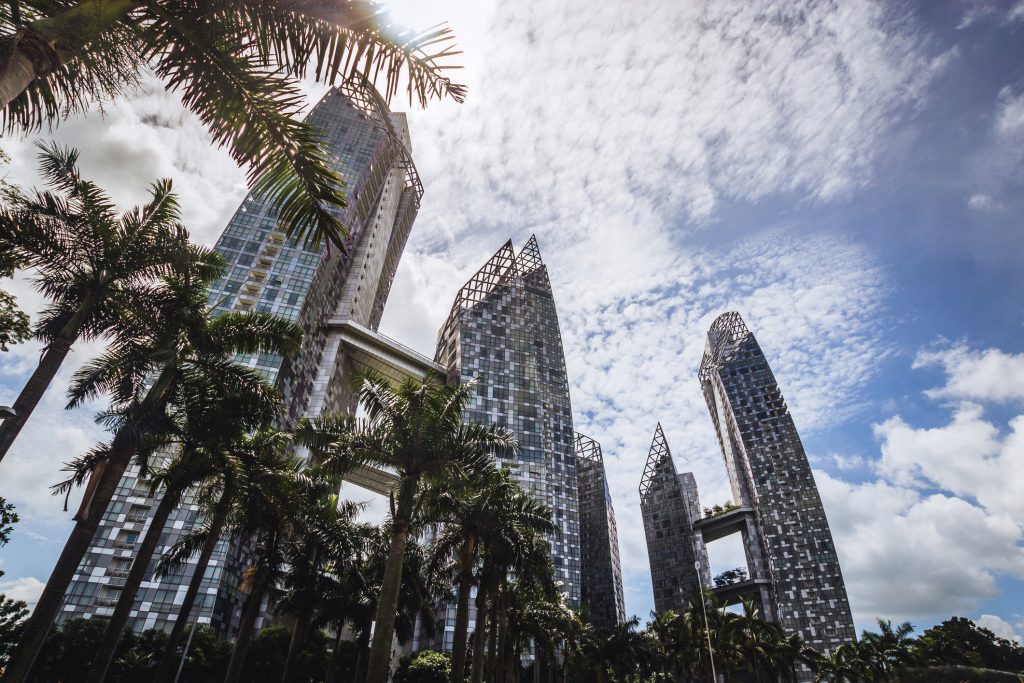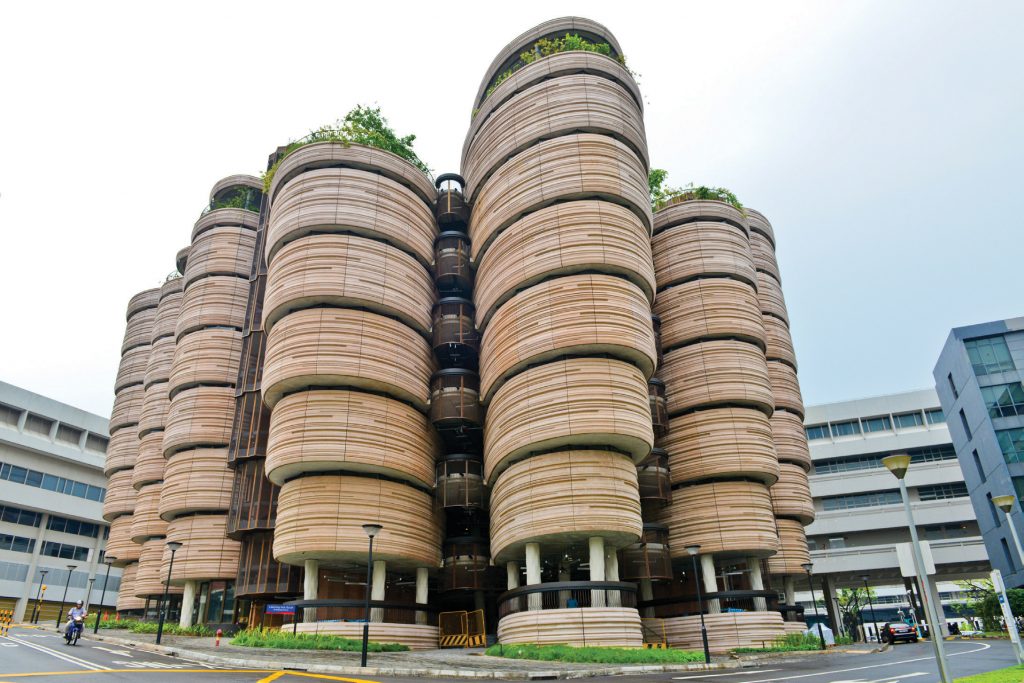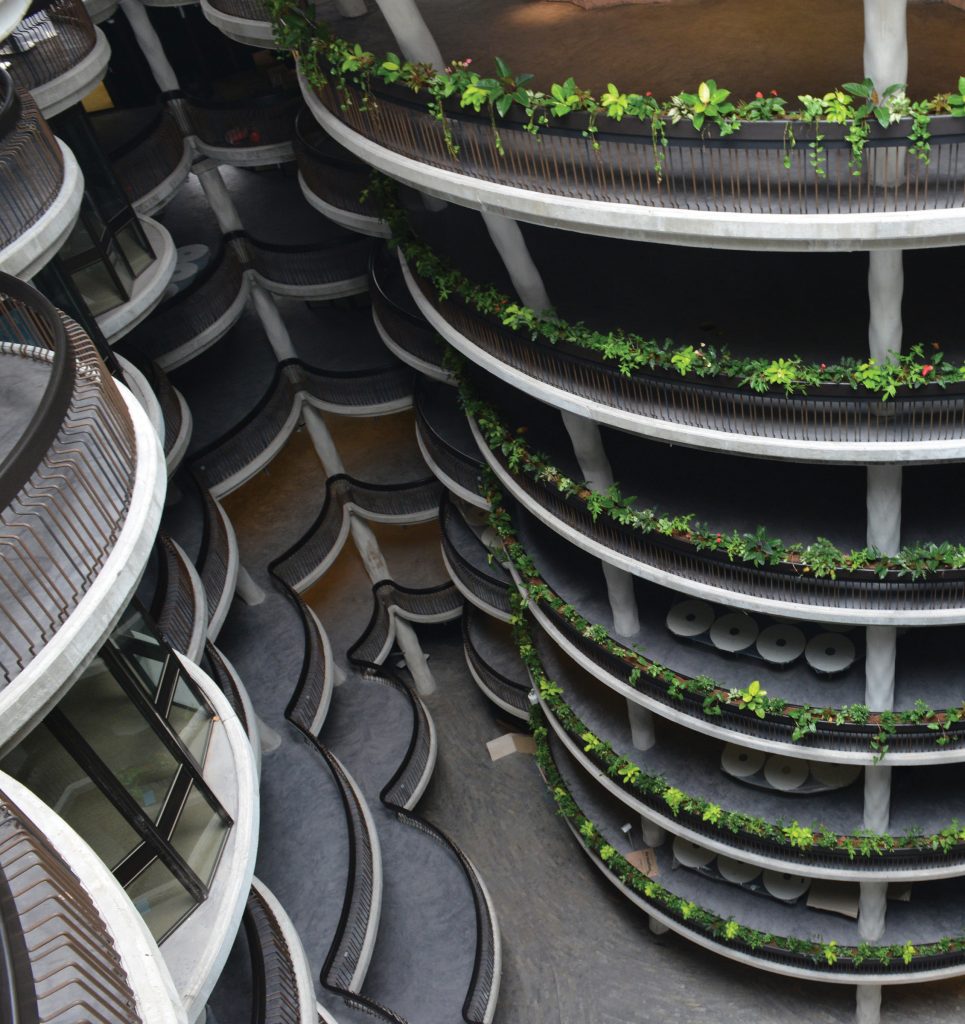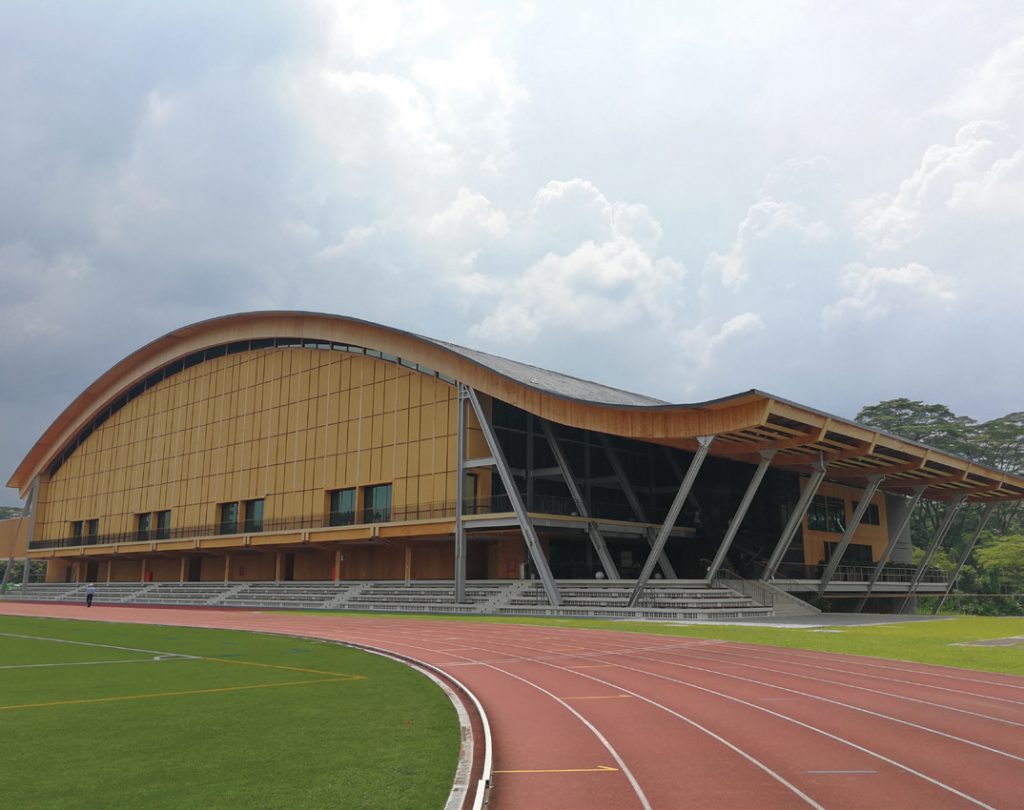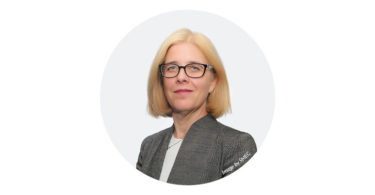Serena Yap is a Technical Director and Head of the Building Structures team in the Aurecon’s Built Environment unit in Singapore.
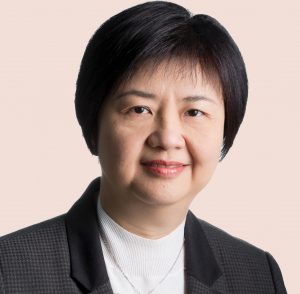 Serena Yap is a Technical Director, who heads Aurecon’s Building Structures team in Singapore. A registered Professional Engineer (Civil) and a Qualified Person (QP) with over 32 years’ experience in design and project management in both building and infrastructure works, she specialises in complex large-scale and award-winning projects in Singapore and around Asia.
Serena Yap is a Technical Director, who heads Aurecon’s Building Structures team in Singapore. A registered Professional Engineer (Civil) and a Qualified Person (QP) with over 32 years’ experience in design and project management in both building and infrastructure works, she specialises in complex large-scale and award-winning projects in Singapore and around Asia.
Currently, she is working on a six-storey university building to be fully constructed using Mass Engineered Timber (MET), which is a highly sustainable material. When completed, the building will cater to an expected population of 5,500 students and 350 staff.
Prior to joining Aurecon in March 2016, Yap was the head of the Building (Civil and Structural) Group at T.Y. Lin International Pte Ltd, where she worked on iconic projects such as The Hive, Nanyang Technological University (NTU); Reflections at Keppel Bay; and The Interlace, which won the Building and Construction Authority’s (BCA) Award for Design Engineering and Safety Excellence in 2014.
An active champion of better construction methodologies and materials, Yap has held council positions and is a member of various industry bodies, including Working Group for Eurocode 5, Working Group for Structural Steelwork Inspection of the Singapore Accreditation Council (SAC), and Structural Steel Society of Singapore. She is currently a BCA Industry Ambassador and sits on the BCA Productivity Gateway Advisory Panel. Her latest contribution is being part of the working committee for BCA’s MET Guidebook, which is due to be released in Q3 2018.
Tell us about your technical approach to building structural design and in managing clients’ expectations as Technical Director and Head of Aurecon’s Building Structures team?
My approach is to have empathy for stakeholders. It is important to start with a solid understanding of the client’s needs and requirements—not just for design and engineering, but also the business case behind the project. This helps the entire team to understand the design intent and rally towards achieving the vision. It also helps build trust with the client that their project is in safe hands.
From the business case and the design intent, I can also guide my structures teams to find the optimum structural scheme and ensure economical, buildable and sustainable designs. I enjoy challenging myself and my teams to make the complex simple.
By understanding the project as well as the client, this generates trust between the client and the project team. I find that managing clients’ expectations is quite straightforward because of the level of trust. Clients will provide open and prompt feedback on our performance. By acting promptly on the feedback, the team can maintain our level of service and build more trust.
Could you give an example of a recent and creative building structural design solution that you have successfully implemented?
Over the past few years, I have been involved in the use of an innovative material, MET, to design and construct two large-scale buildings. This material had not been used in Singapore before and there were significant challenges to overcome.
The first project (that I completed with my previous company) was a sports hall at the NTU, where the key challenge was the 72-metre-long span roof. This was the first time that MET was used in Singapore and everyone who worked on the project—client, authorities, designers and contractors—learnt many lessons about performance of the material, testing, assembly, etc.
Taking lessons from the first project, I am currently working on the second MET building in Singapore, where Aurecon is the structural engineering consultant. Once completed, it is touted to be one of the largest timber buildings in the world with an estimated gross floor area (GFA) of 40,000 square metres.
What do you think is a major strength of Aurecon and how have you personally contributed towards its success?
I think Aurecon’s major strength is our focus on design as a discipline. Design is more than understanding technical specifications and applying them to deliver new buildings. Great design is about imagining what can be and then creating solutions to deliver great outcomes for clients and stakeholders. Backed by our innovation and digital strategies, we can work with clients to conceptualise, provoke, refine, plan and deliver excellence across their project’s life cycle. Because we have a unified view of design, there is a strong culture of teamwork and selfless sharing of technical expertise, across business units and borders.
I bring 30 years of technical mastery in structural design over a variety of projects. Most recently, I led Aurecon into being a major player in the niche specialisation of designing large-scale timber structures.
Building structural design develops designs that integrate with that of other designers and includes stability, strength and rigidity of built structures for buildings and non-building structures. What are some recent memorable projects that you have worked on?
I have had the privilege of working with top international designers on projects over the past few years. They include residential projects such as The Interlace (not with Aurecon) and Reflections at Keppel Bay (not with Aurecon), as well as institutional projects such as The Hive (not with Aurecon), NTU Sports Hall (not with Aurecon) and large-scale timber building in Singapore (with Aurecon).
What do you think are the major challenges faced by the building structural design industry in Singapore in general?
In Singapore, productivity targets are now becoming more important for projects than financial considerations. This has led the industry to consider new construction methods and materials like timber.
Engineering, like many professions, is being disrupted by technological innovation. There is software out there that can design a building or bridge, if you input the required dimensions. The designs may be crude for now but it won’t be long before the algorithms get more sophisticated.
But disruption is not new to engineers. In the last 50 years, we’ve gone from using slide rules and AutoCAD to designing in 4D and augmented/virtual reality. We have seen our jobs outsourced to cheaper locations. Ironically, if an algorithm can be written to automate something, we are often the ones who do it.
I am frequently asked whether an engineer can be replaced by artificial intelligence. My response is this: any engineer who can connect their technical mastery to human needs will not be easily replaced. So, I encourage my fellow engineers to do what we’ve always done— embrace the disruption and lead the change, rather than follow it.
What are the main objectives that you try to meet in every design?
My main objective is to find the right balance of: meeting the client’s business and project requirements; bringing the original architectural design intent to life; ensuring safety and integrity of the structure; making it economical to construct; and ensuring sustainability.
How do you want your legacy to be remembered when it comes to your design?
I want to be remembered for having creative and innovative designs that are also practical and buildable.
What principles are fundamental to your work ethos and culture?
When it comes to client’s and project’s requirements, I believe in being creative/innovative and yet ensuring an economical and buildable design. I believe in being fearless to embrace new challenges—whether it’s a new, untested material or new knowledge for an unconventional build. This fearlessness is backed by deep technical mastery and not recklessness.
When it comes to leading my teams, I lead by example. I am always keen to share my knowledge so that everyone can benefit from my experience and reach their full potential. Most importantly, I create a cohesive team culture where members help and support one another.
What are some of the major accolades that you have won and how have they motivated you?
I have won the 2014 BCA Design and Engineering Safety Excellence Award for The Interlace condominium.
Not only do awards spur me on, but they also give me a deep sense of satisfaction from successfully completing a project and turning the client and architect’s vision into reality.
As a professional engineer, what are your upcoming plans for 2018–2019? I am very excited as I have been accepted as a scholar by Aurecon Design Academy for a three-year programme. The academy selects a handful of engineers every year for advanced training in engineering and broad-based soft skills like communication, collaboration, human-centric design and transdisciplinary thinking.
I also intend to take what I learn from the design academy and impart it to my team to help them grow and develop.
I am also looking forward to seeing the largest timber building become a reality as construction begins.

 Malaysia
Malaysia Hong Kong
Hong Kong Indonesia
Indonesia Tiếng Việt
Tiếng Việt ประเทศไทย
ประเทศไทย


